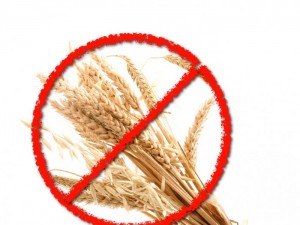Mintel: grain-free on the rise in Germany
 New research from Mintel reveals that in the German flour market grain-free flour launches have more than doubled in the last year, accounting for 23% of all new flour launches in 2015, compared to only 10% in 2014.
New research from Mintel reveals that in the German flour market grain-free flour launches have more than doubled in the last year, accounting for 23% of all new flour launches in 2015, compared to only 10% in 2014.
Moreover, Mintel research shows that grain-free is also an increasingly popular choice when it comes to bread and bakery products, where newly launched grain-free options have risen from 6% in 2011 to 9% of total bread and bakery launches in Germany in 2015.
Currently, awareness and popularity of certain free-from claims are strong in Germany, which is promising for the growth of the grain-free claim. One in ten (10%) Germans aged 25-34 say they have eaten gluten-free bread in the last 6 months prior to April 2015, whilst on average 7% of Germans now claim they follow a gluten-free diet, rising to 11% among 16-24 year olds.
Even though Germany’s packaged bread and bread products market is the second largest in Europe after the UK, it has been in decline for years. According to Mintel market forecasts, the average German consumed 11.7 kg of bread and bread products in 2015, down from a total of 14.2 kg back in 2008. What’s more, the packaged bread and bread products retail market value is expected to fall below the 2bn EUR mark, declining from 2.04bn EUR in 2014 to 1.99bn EUR in 2018.
“There is a significant opportunity for grain-free flour in Germany, with the growing gluten-free market and rising health awareness among consumers laying the foundation for grain-free innovation,” said Katya Witham, Senior Food and Drink Analyst at Mintel. “As grain-free flour has a considerably higher protein content than wheat flour, this could be a key attribute for this claim to appeal to consumers following a high protein and low carbohydrate diet.”
Promisingly for the growth of the grain-free claim, diets high in protein seem to be popular in Germany. Mintel research finds that one quarter (25%) of Germans say they are incorporating more protein into their diets compared to a year ago, rising to a staggering 42% among 16-24 year olds. What’s more, one in five (20%) Germans claim they are actively reducing their consumption of, or avoiding, carbohydrates, increasing to 23% of consumers aged 16-24.
When it comes to ingredients for grain-free flours it seems that legumes, such as lentils, peas or soybeans, are the most commonly used ingredients for grain-free flour, currently accounting for two-thirds (67%) of all grain-free flour launches in 2015.
As manufacturers respond to a growing demand for plant-derived foods and novel protein sources, lupine flour is another ingredient that is gaining popularity. Germany appears to be among the first markets to embrace the lupine trend; out of all bakery launches using lupine flour in 2015, 22% have been introduced in Germany, closely followed by France (21%) and Italy (11%).
“Popular in some Mediterranean cuisines, the lupine plant is a legume which produces seeds high in fibre and protein, but – unlike other legumes – is rather low in carbohydrates,” Witham continued. “Lupine legumes are also rich in essential amino acids and minerals, which makes them not just gluten-free, but also nutritious and easily digestible. Nut and drupe flours have also become an option in recent years, with almond and coconut standing out as particularly trendy ingredients due to their perceived health benefits. ”
In addition to non-grain flours, a closer look at the German flour market reveals a growing number of products using ancient grains as an alternative to wheat. According to Mintel research, millet was the most popular ancient grain used in 14% of all flour launches in 2015, closely followed by quinoa (10%), buckwheat (5%) and teff (5%).
But ancient grains are not just finding their way into Germany’s kitchens, but are also increasingly being utilised to reinforce health positioning of mass produced bread and bakery products. The number of bakery launches containing quinoa and chia seeds more than quintupled (+550% and +600%, respectively) between 2013 and 2015, while use of buckwheat and millet more than doubled (+100% and +138%).
What’s more, two in five (39%) Germans say they are interested in buying sweet biscuits made with non-wheat grains such as spelt, amaranth or quinoa, rising to half (50%) of 25-34 year olds.Additionally, 44% of German women are interested in baked goods that contain more fibre, while half (50%) of Germans say it is worth paying more for high-quality bread or baked goods.
“An alternative to wheat, ancient grains come with nutritional qualities as well as interesting flavours and textures,” Witham said. “Since ancient grains will appeal to the growing base of health-conscious consumers, the superfood will be used in a wide variety of products, from bread and baked goods to pizza and pasta, as well as snacks and ready meals.”
Mintel Group Ltd is a privately owned, London-based market research firm. The corporation also maintains offices in Chicago, New York, Belfast, Shanghai, Tokyo and Sydney. Mintel databases, analysis, and forecasts are accessible only to subscribing clients and to students in participating university libraries.


































